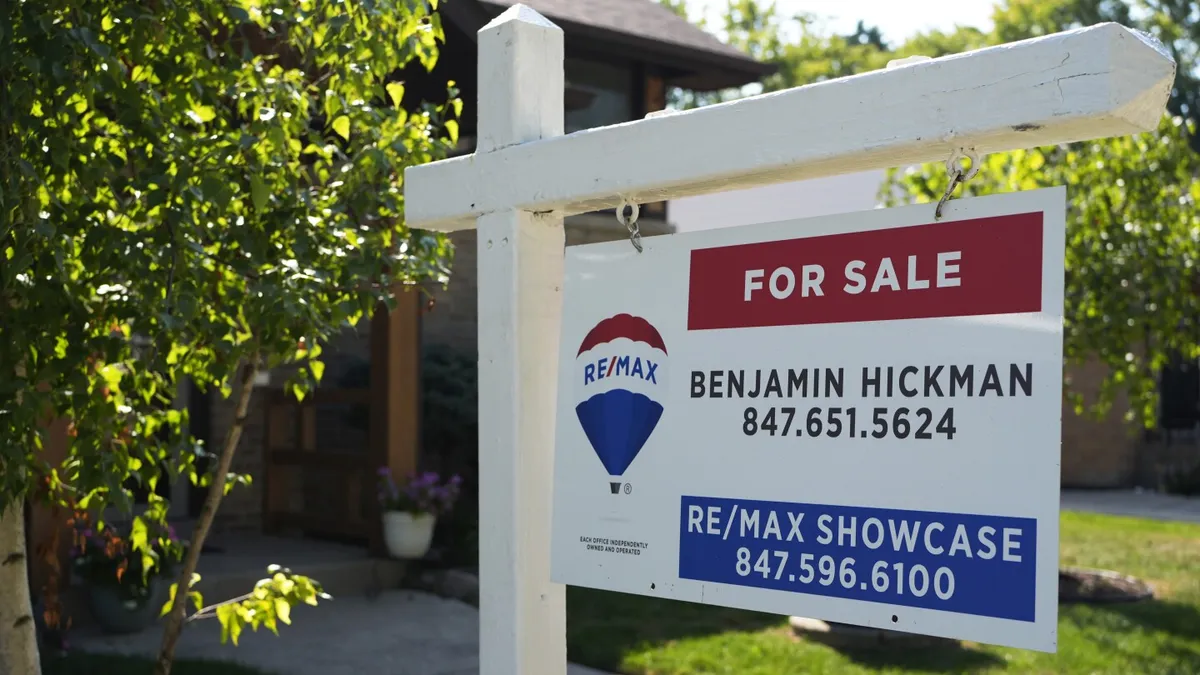
Los Angeles (AP) — The U.S. housing market experienced a significant decline in the sales of previously occupied homes in January, primarily due to rising mortgage rates and home prices, which have deterred many potential buyers. Despite a broader selection of properties available, sales fell by 4.9% from December, reaching a seasonally adjusted annual rate of 4.08 million units, as reported by the National Association of Realtors (NAR).
While sales increased by 2% compared to January of the previous year, marking the fourth consecutive annual rise, they did not meet economists' expectations of a 4.11 million pace, according to FactSet. Notably, home prices increased for the 19th consecutive month, with the national median sales price rising by 4.8% from a year earlier to $396,900.
"Mortgage rates have remained stubbornly high despite several rounds of short-term interest rate cuts by the Federal Reserve," stated Lawrence Yun, NAR’s chief economist. "Combined with elevated home prices, housing affordability remains a major challenge." The U.S. housing market has been in a slump since 2022, with sales of previously occupied homes last year hitting their lowest level in nearly 30 years.
The average rate on a 30-year mortgage briefly dipped to a two-year low last September but has largely hovered around 7% this year, according to Freddie Mac. This rate is more than double the 2.65% record low from a little over four years ago. While mortgage rates have eased slightly in recent weeks, the reduction has not substantially improved affordability for many aspiring homebuyers.
Applications for home loans dropped by 5.5% last week, reaching the lowest level since the start of the year, as reported by the Mortgage Bankers Association. Rising home prices and high mortgage rates have particularly impacted first-time buyers, who comprised 28% of all home sales last month, consistent with January 2024 but down from 31% in December. The annual share of first-time buyers hit a record low of 24% last year, compared to the historical average of 40%.
If mortgage rates remain at current levels, first-time buyers will continue to face difficulties, as "housing affordability is not there," Yun explained. Economists predict that the average rate on a 30-year mortgage will stay above 6% this year, with some forecasts reaching as high as 6.8%.
Homebuyers who can afford current mortgage rates or pay in cash found a wider range of options last month. There were 1.18 million unsold homes at the end of January, up 3.5% from December and a 16.8% increase from January last year, according to NAR. This translates to a 3.5-month supply at the current sales pace, up from a 3.2-month pace in December and a 3-month pace at the end of January last year. Traditionally, a 5- to 6-month supply is considered balanced between buyers and sellers.
One reason for the rising inventory of homes is the increased time properties spend on the market. In January, homes typically took 41 days to sell, the longest duration since before the pandemic, compared to 35 days in December. Despite better inventory, sellers generally maintain an advantage over buyers. About 15% of homes sold last month went for above their list price, and on average, homes received 2.6 offers, Yun noted.
Yun projects that there could be 1.5 million homes on the market when the spring homebuying season starts, although the U.S. requires closer to 2 million properties for sale to meet demand. "We are still supply constrained, but the worst of the supply constraint is over," he concluded.